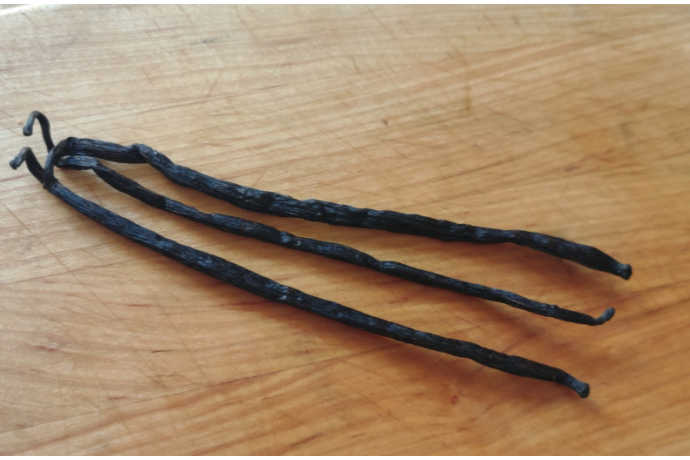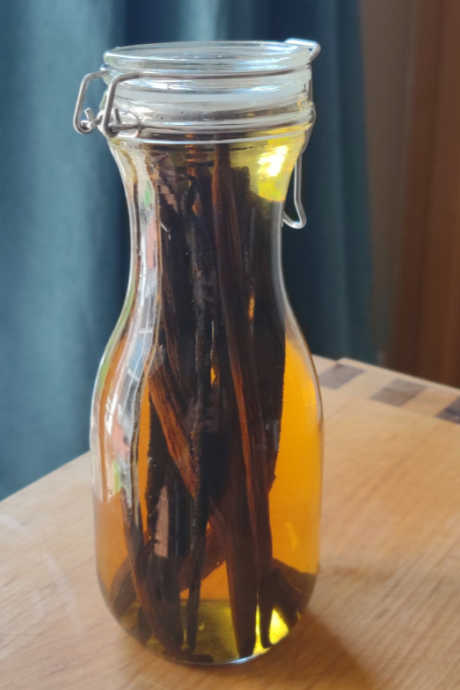Good Vanilla: Anything But Plain
Posted by Amy on Sep 22nd 2021
Even if you’re not a fan of Ina Garten -- also known as the Barefoot Contessa -- chances are you’ve heard her philosophies on food and cooking:
“If you don’t have time to make it, store bought is fine.”
“You can be miserable before you eat a cookie, and you can be miserable after you eat a cookie, but you can’t be miserable while you’re eating a cookie.”
“Use good vanilla.”
The first two are straightforward, but what the heck is good vanilla?
Buying good vanilla can be a little bit like buying good wine. It can feel intimidating at first, but if you know what to look for, you’ll soon feel like letting your inner gastronome loose in the aisles of your local spice shop. We’ll walk you through the basics of what good vanilla is all about.
Good Vanilla: Vanilla Beans
Good vanilla starts with vanilla beans. But where do vanilla beans come from? They’re actually seed pods from the Vanilla genus of orchids. While there are dozens of species in the Vanilla genus, only the species Planifolia and Tahitensis are used in the production of vanilla.
Like wines, a vanilla bean’s flavor is impacted by its area of cultivation. Approximately 80% of the world’s vanilla is from beans grown in Madagascar and surrounding islands in the Indian Ocean. Mexican vanilla beans are known for having a deeper and spicier flavor, akin to cloves or nutmeg, while Tahitian vanilla beans have a floral or fruity flavor.

One reason vanilla beans are so expensive, aside from how far they have to travel to get to the US, is that they’re pollinated by hand. Due to the anatomy of the vanilla orchid flower, only one type of bee is capable of pollinating them. Melipona bees are known as vanilla bees, and they are endangered. Therefore, hand-pollination by humans is essential to vanilla bean production.
Good Vanilla: Vanilla Extract
When shopping for ingredients, make sure you buy ”vanilla extract.” Avoid anything labeled “imitation vanilla extract” or “vanilla flavor” or “vanilla flavoring” or “vanilla syrup.” Only vanilla extract is made using real vanilla beans.
Vanilla beans lend their own sweetness to vanilla extract, so no sugar should be added. Corn syrup and caramel color should not be on the ingredient list either. Vanilla extract is required to have an alcohol content of at least 35%. Vanilla flavor cannot contain alcohol, but will usually contain propylene glycol or glycerin.
Due to its high alcohol content, vanilla does not really expire, and does not need preservatives or additives. If the ingredient list is long and full of words you can’t pronounce, skip it.
Good Vanilla: Do-It-Yourself
If the thought of standing in a store, studying vanilla extract labels like you’re about to retake your SATs makes you break out in hives, and store bought is not fine, we have a simple solution: make your own!

Start with four to six vanilla beans. Look for beans that are plump, shiny, and even a bit moist. They should also have a hint of vanilla scent. We love the Madagascar Vanilla Beans from Savory Spice Shop. Place them in a 16-ounce jar and add enough vodka to cover the beans. Put the lid on your jar, and shake it up. Finally, tuck your concoction away in a cabinet.
How long will it take for your vanilla extract to be ready? That depends who you ask. Sources say anywhere from one month to six months. Obviously, you can’t take a sip to gauge the potency. For our own batch, we relied on color and scent. After eight weeks, it had a deep color and a strong vanilla smell.
This method will result in a replenishable supply of vanilla extract. As you empty the jar, add more beans and more vodka. Plus, you can use the beans once your extract has brewed. Snip off the end of a bean and squeeze out the seeds (also called vanilla caviar), which will still be full of rich vanilla flavor.
Good Vanilla: Is It Worth It?
We acknowledge that “good” vanilla can be expensive. You may be wondering, is it worth it? That’s why we conducted our own taste test.
We baked four identical batches of shortbread using Mexican vanilla extract, double fold Madagascar vanilla extract (by far the most expensive of the bunch), homemade vanilla extract, and a grocery store brand with a cost of $4.99 for two ounces. We asked our blind taste testers to choose their favorite, and we did not get a clear winner. (Though everyone agreed that all four batches were delicious.)
Our conclusion: if you are baking something where vanilla is not the dominant flavor, we feel it is fine to go with an economical option. However, if you are baking something that will prominently feature the vanilla flavor -- such as crème brulee, ice cream, or this fabulous
double vanilla cake -- we encourage you to be thoughtful in your vanilla purchase.

